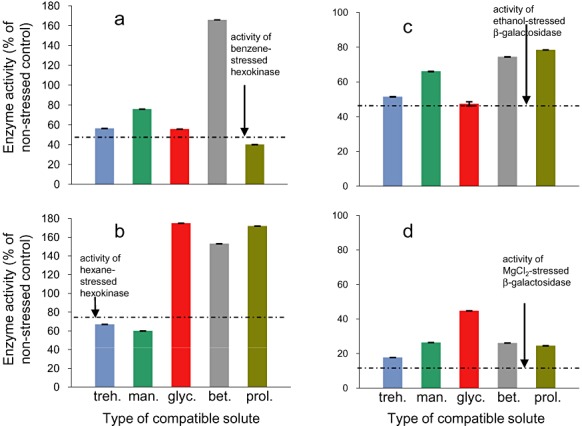Figure 5.

Protection of stressor‐inhibited enzymes by diverse compatible solutes for: (A and B) a benzene‐inhibited (A) and a hexane‐inhibited (B) hexokinase‐pyruvate kinase‐lactate dehydrogenase reaction and (C and D) ethanol‐inhibited (C) and MgCl2‐inhibited (D) β‐galactosidase. All stressors were used to cause 60–90% inhibition of catalytic activity at the following concentrations: benzene 20.5 mM, hexane 123 µM, ethanol 5.2 M and MgCl2 0.97 M (see A–D). Compatible‐solute concentrations were: trehalose 5 mM, mannitol 300 mM, glycerol 2000 mM, betaine 1500 mM and proline 78 mM (A and B) and trehalose 62.5 mM, mannitol 75 mM, glycerol 150 mM, betaine 125 mM, proline 156 mM (C and D). All enzyme assays were carried out independently in triplicate (hexokinase assay) or duplicate (β‐galactosidase) and standard deviations are shown.
